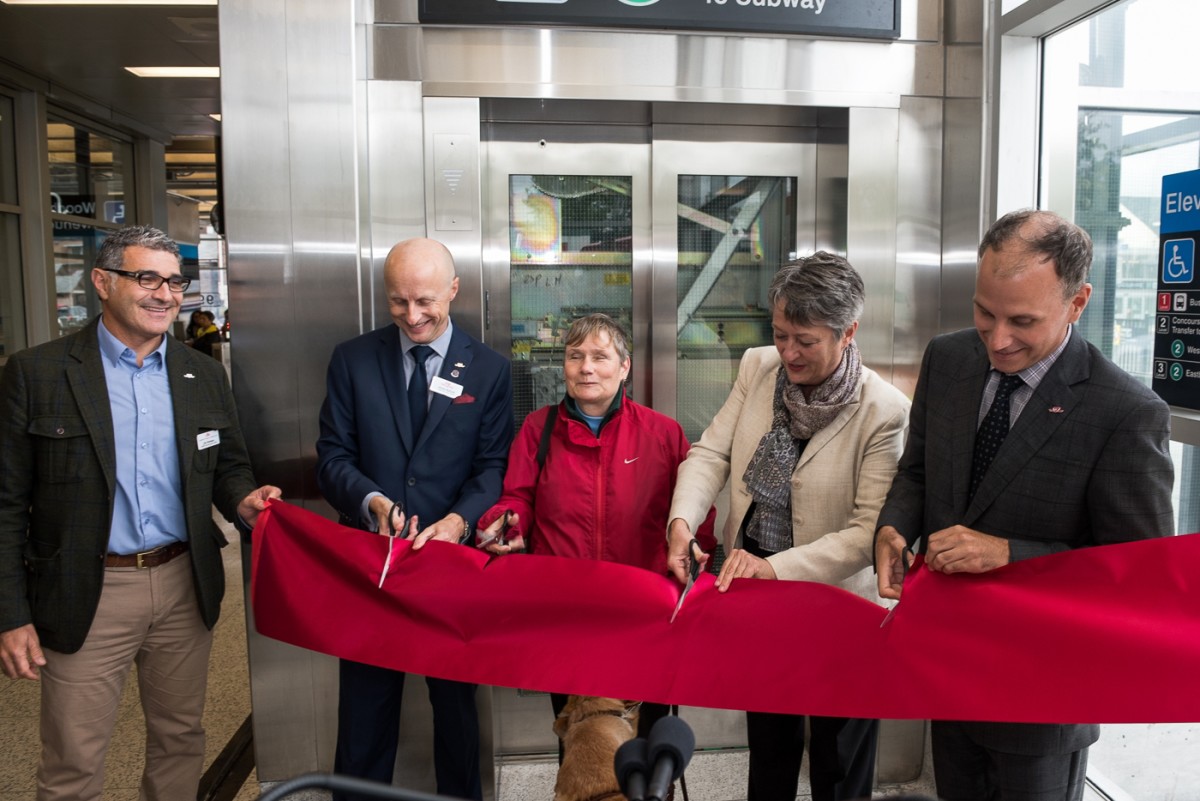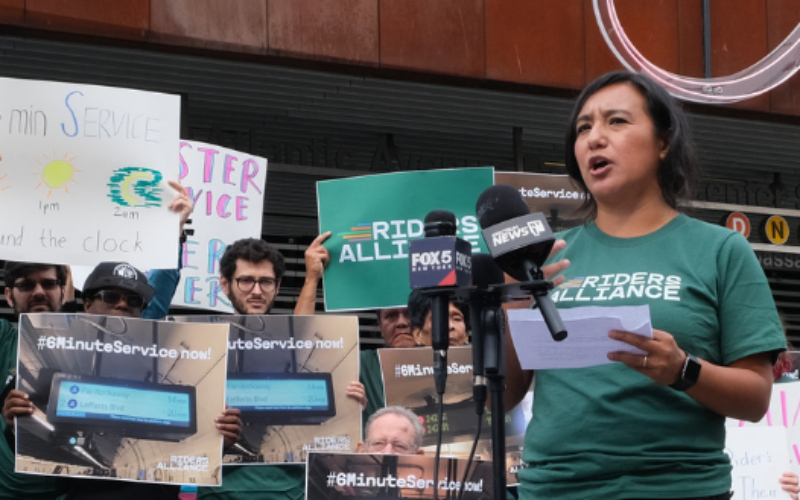
Andy Byford at the Woodbine Station elevator opening in Toronto. Image credit: East York Chronicle
In his first few months on the job as President of New York City Transit, Andy Byford has caused a stir among transit and mobility advocates by highlighting improved accessibility as one of his top priorities. As our Access Denied campaign has chronicled, New York’s MTA ranks dead last in the country for share of accessible stations. And it has no long-range plan or sustainable funding to turn the situation around.Will Byford be able to cut through the MTA’s historic indifference and prove himself an accessibility turnaround artist? We examined his record as Chief Executive at the Toronto Transit Commission (TTC) to determine whether New York’s disability community has a reason to feel hopeful.
When Byford arrived in Toronto, TTC was already working to make its 75 stations accessible by 2025, under requirements from Ontario’s accessibility law. Guided by a Multi-Year Accessibility Plan, the commission is on track to finish on time. Forty-four TTC subway stations are accessible, including all five of the new Sheppard Line, and five more stations are undergoing retrofits.
The TTC hoped to retrofit every station with accessible entrances by 2020, but a funding lapse forced the commission to delay by five years. In response, Byford stepped up. In 2015, he helped to restore full funding for accessibility from Toronto, the province, and the federal government in the TTC’s current 10-year capital plan. Now, the effort is back up to speed and every station retrofit is fully funded.
According to the TTC’s annual Accessibility Plan Status Report, the commission will spend $670.7 million over the next decade. The projects, which represent about 7 percent of the TTC’s capital budget, include elevator retrofits, replacement of accessible buses, and upgrades to route announcement systems.
At station design and construction milestones, the commission consults with the TTC Advisory Committee on Accessible Transit (ACAT), a volunteer committee of senior and disabled riders, to ensure subtle barriers to access are removed and no new ones are created. Thousands of station elements have the potential to create barriers that even careful designers who lack the day-to-day experience of navigating the subway with a disability may overlook. ACAT weighs in on everything from paratransit service, communications and customer service, training of staff, and the design of TTC stations and vehicles.
“ACAT’s input is highly valued by TTC staff,” says Matt Hagg, Senior Planner for System Accessibility at TTC, “and many accessible features of the TTC stem from the advocacy of ACAT.”
However, the commission wasn’t always so open to the needs of the Toronto disability community, and riders have long contended with discrimination. But the attitude improved markedly under Byford. ACAT chair Raymond Dell’Aera credits Byford with setting a respectful tone and actually listening to the needs of stakeholders in the disabled and senior communities.
Under Byford’s leadership, the agency also made strides in providing accurate online service alerts to customers when elevators or accessible entrances aren’t working. The capital program includes new automatic systems where elevators detect irregularities and automatically report the information to the TTC.
Making stations accessible and communicating effectively to riders is a start, but it’s far from enough. Torontonians with limited mobility still battle thousands of obstacles. But with a Multi-Year Accessibility plan, secure funding, and leadership that listens to the needs of its ridership, Toronto is light-years ahead of its peer agency south of the border.
Accessibility work was already rolling when Byford took over at TTC. Convincing a sclerotic organization like the MTA to care about accessibility, even though it has been repeatedly dragged to court over its failure to comply with basic ADA requirements, will be a heavier lift. Here’s hoping Byford is able to apply the same leadership and sense of purpose he displayed in Toronto.
 On the Brink: Will WMATA’s Progress Be Erased by 2024?
On the Brink: Will WMATA’s Progress Be Erased by 2024?
The experience of being a WMATA rider has substantially improved over the last 18 months, thanks to changes the agency has made like adding off-peak service and simplifying fares. Things are about to get even better with the launch of all-door boarding later this fall, overnight bus service on some lines starting in December, and an ambitious plan to redesign the Metrobus network. But all of this could go away by July 1, 2024.
Read More Built to Win: Riders Alliance Campaign Secures Funding for More Frequent Subway Service
Built to Win: Riders Alliance Campaign Secures Funding for More Frequent Subway Service
Thanks to Riders' Alliance successful #6MinuteService campaign, New York City subway riders will enjoy more frequent service on nights and weekends, starting this summer. In this post, we chronicle the group's winning strategies and tactics.
Read More